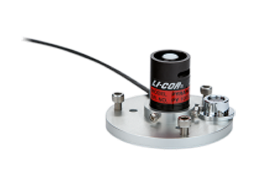Printable PDF: Calculate the LI-200R Calibration Multiplier
Instructions for determining the LI-200 calibration multiplier for sensors purchased from Campbell Scientific.
LI-COR Sensors, such as the LI-200R Pyranometer, can be purchased through Campbell Scientific, Inc. Campbell Scientific obtains these Sensors from LI-COR and subsequently performs some modifications to the cable as well as placing a resistor across the leads to convert the signal from current to voltage. The Sensor is sold by Campbell Scientific with the model name ‘LI200X Pyranometer’. If unclear as to where the Sensor was purchased, Sensors that come from Campbell Scientific will have the modified cable terminating with four wires (red, black, white, and clear) as opposed to two wires (clear and shield) when the Sensor comes directly from LI-COR.
The shunt resistor that Campbell Scientific installs in the Sensor’s cable can be set to a range of resistances. The resistor is ‘tuned’ to a specific ohm resistance so that the output voltage range of the Sensor is always the same. As a result, when using the Campbell Scientific data logger programming, a constant multiplier can be used for these Sensors. The multiplier will always be 200 W m-2 mV-1. For every millivolt read by the data logger, the Sensor is reading 200 m-2. There is no need to calculate a multiplier for these types of LI-200R Pyranometers from Campbell Scientific (LI200X). Simply use the multiplier constant (200m-2) to convert the incoming voltage into units of m-2.
Make sure that the LI-200R is wired correctly with the data logger to record measurements from this Sensor. Program the Campbell Scientific data logger channel to measure Differential Voltage. Wire the Red wire into the ‘H’ channel. Wire the black wire into the ‘L’ channel. Wire the white wire into the AG or GND channel. Wire the clear wire into the GND channel. For further details on this, refer to the Campbell Scientific website and the ‘LI200X’ Manual.
Campbell Scientific data loggers have the ability to measure down into the microvolt (or 0.1 millivolt) range, which is ideal for the LI-COR Sensors. To further increase sensitivity, make sure the voltage range of the channel is set as close as possible to the full-scale range of the Sensor. For example, set the Range of the voltage channel to read from 0-to-15 mV which should cover the range of values expected in a natural sunlight environment. Some of the Campbell Scientific data loggers can have ranges set to 7.5 mV or 10 mV. Again, reference the ‘LI200X’ Manual from Campbell Scientific for further details on this.
